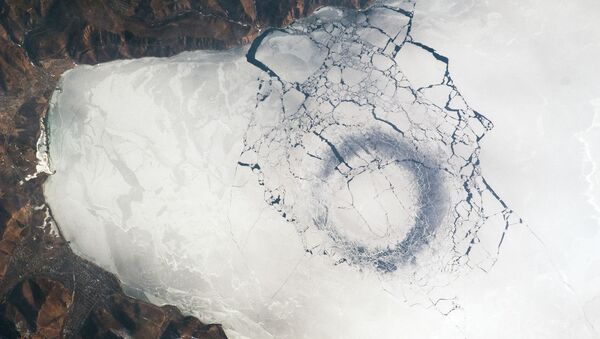In a study published in the journal Nature Geoscience, researchers have proposed a cause for Earth's magnetic north pole moving at extraordinary speeds toward Siberia.
They came to believe that two massive blobs of "negative magnetic flux" sitting beneath Canada and Siberia, very close to the Earth's core, are responsible for the puzzling, “remarkably linear” movement, which even caused them to introduce an unscheduled update to the World Magnetic Model (WMM) last year.
In the study led by Philip Livermore from the School of Earth and Environment at the United Kingdom's University of Leeds, the research team dug into high-resolution geomagnetic data collected over the last two decades to ultimately find two large magnetic patches beneath the aforementioned locations.
The scientists say that if looked at in isolation the two blobs could explain the north pole's recent wanderings, because they serve as “two ends of a linear conduit of near-vertical field, along which the north magnetic pole can readily travel", as the survey report goes.
Speaking to Newsweek, Livermore commented that the patches are largely areas where the magnetic field comes out of Earth's core "like a bundle of spaghetti".
He referred to the patches in question, or "lobes", as a byproduct of the process. "Patches of magnetic field move around all the time—over hundred year timescales—but the Canadian lobe seems to be moving particularly fast", he noted.
The team's models indicated that the north pole will will continue moving along its path toward Siberia, crawling between 242 and 410 miles over the next decade, with the process triggered by the elongation and wearing of the Canadian “patch”. The latter is the result of changes to the pattern of flow in Earth's core starting from around 1970.
As the Canadian patch gradually grew weaker, the pull of the Siberian patch has strengthened with time, resulting in the magnetic north being drawn toward it literally like a magnet.
He also stressed the importance of keeping the WMM editions up to date with the changes in the speed of the magnetic north pole. "It's quite possible that yearly updates will be necessary in the coming years, it's hard to say for sure", he said.
Normally, the model is updated once every five years, while the position of the magnetic north pole as such was first recorded back in 1831.



